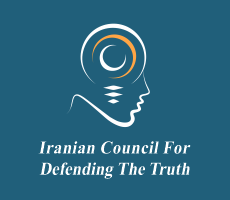“We the People of the United States, in Order to form a more perfect Union, establish Justice, insure domestic Tranquility, provide for the common defense, promote the general Welfare, and secure the Blessings of Liberty to ourselves and our Posterity, do ordain and establish this Constitution for the United States of America.” The Preamble to the United States Constitution
To talk about ‘justice’ in the United States it is necessary to start at the beginning and from the beginning there has been no justice and no peace for people of color. “We the people” who crafted the preamble to the U.S. Constitution in 1787 were actually an elite group of 55 of the most privileged white males—so-called revolutionaries—who formally brought the United States into being. When these white men described “a more perfect Union” they had no intentions of including Blacks, Indigenous people, or other People of Color (BIPOC), and women were another minority demographic that their preambular and constitutional declarations discounted, dismissed and disenfranchised.
Even white women— considered chattel and treated as such — were subordinated to elite white males in the hierarchy of privilege and white male power that wrote and codified the laws, delineated the treaties, and decided the course of his-tory. The U.S. Constitution merely enshrined the predatory rule of merchants, slaveholders and other (exclusively) white robber barons and profiteers.
Now, two centuries and three decades later, so much has changed, and nothing has. The changes we can see in the kinds of newspaper reports that appear in mainstream newspapers and magazines. This is the same mass media that once blatantly and self-righteously upheld white supremacy, and still does. The methods and logic have changed, the arguments have been reframed, the rhetoric reconstituted, but the overall result remains the same. White power, white methods, white interests and white logic inform all aspects of life in the United States (and Canada), by degrees.
BIPOC know this, because the manifestations of these realities—white power, methods, interests, and logic — were quite literally inscribed in the consciousness, and more often and routinely accounted in flesh and blood, over the centuries of discrimination, injustice, and outright violence, both systemic and vigilante, since the first Europeans set foot in the ‘New World’. The legal system codified by the Constitution has simultaneously protected the interests of the white power system and upheld the absolute charade of “democracy” premised on equality, liberty and justice for all.
White people in the United States are, at present, the dominant social demographic (although this is rapidly changing) and therefore we have an interest in protecting the rights and privileges of our social group. Since the beginning (long before 1787) the white power system has perpetuated genocide on the indigenous American populations, everywhere, and this egregious injustice — genocide: defined by the white power system as the supreme crime —is still happening. People of color have received the same treatment. If we strip away the propaganda and the white fragility that enshrines and obfuscates the arguments and actions of the contemporary struggle for basic human rights being waged by BIPOC and their allies, we find the same basic characteristics, structures, and system that existed from the ‘beginning’.
The U.S. Supreme Court has always upheld the prerogatives of the rich and powerful, and these are the prerogatives of white males (with token people of color and women allowed into the elite club). For example, the recent passing of Ruth Bader Ginsburg, associate justice of the U.S. Supreme court, 1993-2020, evoked a flood of consternation and concern for the fate of the highest court in the land. However, Ginsburg played a scripted role that was expected of her, serving as a liberal voice on an otherwise more conservative court. Throughout Ginsburg’s tenure, the Supreme court adjudicated in favor of elite white male interests as surely as the Supreme Court that sat through the 1800s, through the U.S. Civil War period (circa 1859-1866) and the Emancipation Proclamation (1863), the post-war Reconstruction era (circa 1867-1880), post-Reconstruction (1880-1915), the two World Wars and the Great Depression (1916-1950), and the Civil Rights movement (circa 1954-1970).
The seeds of extreme white supremacist resistance to the emancipation of slaves bore strange fruit with the formation of the Ku Klux Klan in Tennessee in 1865.1 The KKK was initially comprised of elite white males but it quickly evolved to draw whites from all echelons of southern society, including wealthy bankers, lawyers, merchants, ministers, farmers and politicians. Other white supremacist groups (e.g. the Knights of the White Camelia and the Pale Faces) also flourished during Reconstruction. In Alabama, Tennessee, and South Carolina these groups organized networks of white terrorist cells: in some counties, almost every white male joined the ‘movement’. The vigilantes defended ruthless labor practices and protected the economic interests of white males.
They whipped and lynched black freedmen who showed any independence or even the mildest resistance to a recodification and reconfiguration of white power threatened by Reconstruction. Violence was routinely premised on allegations of black male sex crimes against white females, charges that were routinely fabricated; the vigilante response frequently targeted entire black communities much as native Americans, contemporaneously, were being slaughtered en masse in the Dakotas. It was the same white structural violence in all cases: disingenuous, ruthless, inhuman, pathological, and ever justified by self-serving white supremacist arguments. By the standards of contemporary international humanitarian law, the white power system perpetrated untold crimes against humanity as a matter of entitlement. These included rape, sexual and sexualized torture, humiliation, sexual and other bodily dismemberment committed against BIPOC individuals and groups.
The fervor reached a heightened pitch just prior to the U.S. Presidential elections of 1868, and after. The rivalry and debauchery of the Democrats and Republicans — the only two white man’s parties that were allowed to contest elections, then as now—resulted in a national free-for-all around questions of race, slavery and emancipation, and a violent contest to win or exclude the ‘black vote’ ensued in earnest. Every Presidential election in the history of the United States has involved racial discrimination, racial exclusion, and racial profiling.
The hysterical white reaction to black people’s attempts to claim their basic civil and human rights resulted in violent ‘counterrevolutionary’ uprisings and psychological warfare that were, effectively, the forerunners of the ‘counter-insurgency’ and psychological warfare taught by the U.S. Department of Defense at elite U.S. military-intelligence facilities and practiced in the field during foreign interventions all over the world. Then as now, the ‘counterrevolutionary’ response was not limited to the southern States. In 1868, New York Governor Horatio Seymour campaigned on a platform of white supremacy, attacking post-war civil rights laws and denigrating people of color.
In 1892, a Southern-dominated Democratic party won the Presidential elections and the controlling majority of Congress predominantly due to its success in disempowering and disenfranchising black voters and marginalizing Black Americans’ voting rights “just as the national lynching rate soared.” 2
At the turn of the century, politicians in the south and the north deployed white supremacist views and advanced pro-lynching rhetoric that blamed the victims and justified mob violence as the only reasonable response to the non-existent plague of black men raping white women, and they did so with full understanding of what they were doing and the profitability and efficacy of it. In 1906, President Theodore Roosevelt [disingenuously] declared that “the greatest existing cause of lynching is the perpetration, especially by black men, of the hideous crime of rape.”3
Historians estimate that at least 400 African Americans were lynched between 1868 and 1871 alone. Given the extreme conservatism of the white power structure and the pressures on historians (academics) to conform and self-censor, it is likely the numbers of lynchings were substantially more. It was not enough to terrorize and murder BIPOC for anything that the white system counted as an actual transgression: people of color were persecuted by white extremists for merely being seen, or for merely being alive.
Election rigging, redistricting, gerrymandering and other fraudulent electioneering was complemented by intimidation, attacks, executions and massacres of BIPOC, such as the extrajudicial execution of 150 black protestors (of rigged elections) by 300 whites in Colfax, Louisiana, April 1873. The U.S. Supreme Court dismissed all federal charges against the responsible whites. The local narrative in Colfax continued to praise the white perpetrators and perpetuate racial hatred. White terrorism against blacks was frequently centered around the fraudulent and tyrannical two-party electoral process.
The thuggery, extortion, theft, rape, lynchings and other physical and psychological terrorism served on BIPOC continued into the Civil Rights era of the 1950s and 1960s, and it was not limited to vigilante terrorist cells, but it was also aided and abetted by police departments, local sheriffs, federal marshals and other agents and institutions of state power. Marauding white mobs broke into black people’s homes and gang raped women and girls. Homes were bombed and incinerated, often resulting in the deaths of black men, women and children who were inside.
References
- The sections of this report dealing with the subjects of lynching and of white supremacist organizations is heavily based on the 88-page publication Lynching in America: Confronting the Legacy of Racial Terror, published by the Equal Justice Initiative in 2015.
- Desmond S. King and Rogers S. Smith, “Racial Orders in American Political Development,” American Political Science Review, Volume 99, No. 1, 2005: p. 87.
- Paula J. Giddings, Ida: A Sword Among Lions: Ida B. Wells and the Campaign Against Lynching, 2009: p. 468.

